The northeast is primarily a temperate deciduous forest biome. Prairie plants often become the poster child for native plants because of their abundant and long-lasting full-sun blooms. In the northeast, however, our ecological heritage comes from the forest and all the persevering woodland plants that carve out their niche within the canopy. To celebrate this legacy, we’re rounding up our favorite native plants for shady sites!

Instead of defaulting to tree removal on properties, we can lean into the exiting site conditions and design beautiful woodland shade gardens. Not only does this strategy preserve and restore precious woodland biodiversity, but it also allows us to protect as many trees as possible. Trees provide critical carbon sequestration, oxygen production, local cooling, and stormwater absorption, not to mention abundant habitat for wildlife. So, celebrate your trees, keep them alive, and allow them to thrive with a thoughtfully designed shady understory. See below for our favorite native trees, shrubs, perennials, and ground cover for shady sites in New York, Connecticut, and New Jersey.
Native Trees for Shade
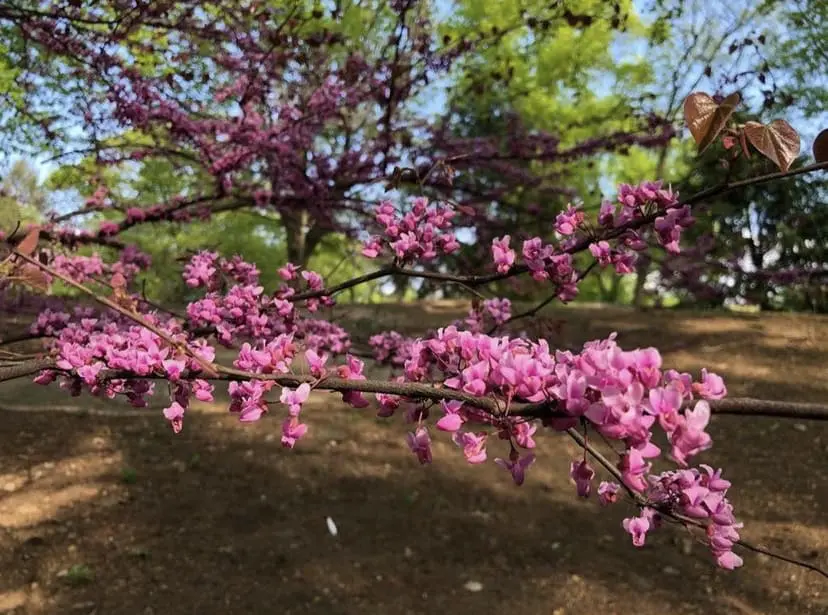
Eastern Redbud Cercis canadensis
20-30’ high x 25-35’ wide
Part Shade; Average Water
Pink blooms engulf the elegant branching of Eastern Redbud before leaves emerge in spring, making a stunning focal point in the landscape. The multi-trunk structure and yellow fall foliage make Redbud a great year-round ornamental native. Redbud is an understory tree and prefers dappled shade; it may burn in full sun. Larval host plant for Henry’s Elfin butterfly; provides food for songbirds and habitat for many pollinators and beneficial insects.
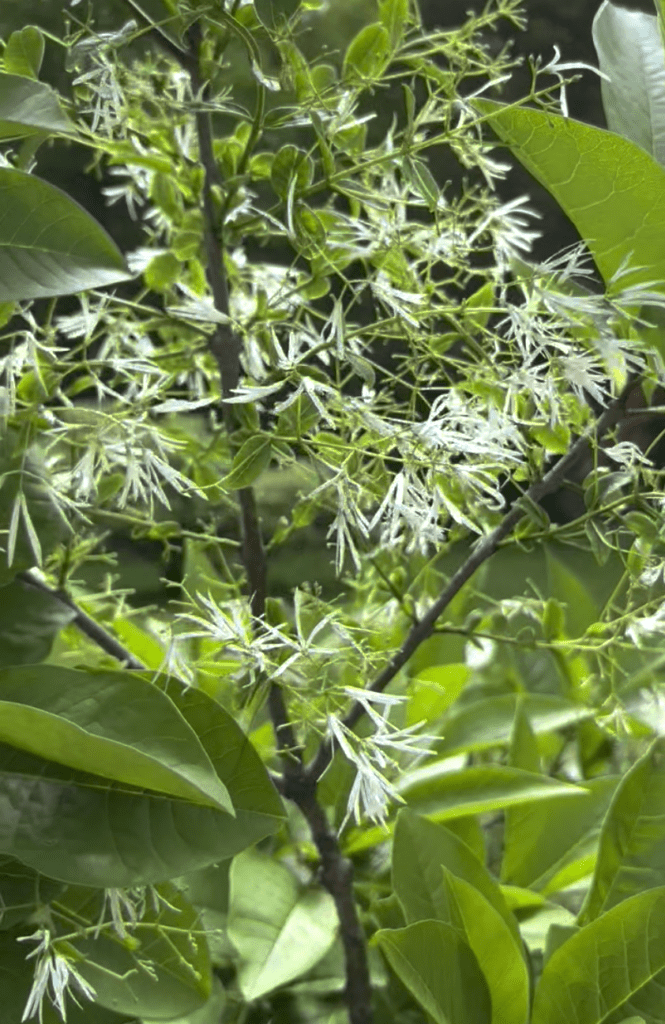
White Fringe Tree Chionanthus virginicus
12-20’ high x 12-20’ wide
Part Shade to Full Sun; Average Water
A delightful native spring-blooming tree featuring tassel-like fragrant white blooms. Tolerant of sun but intolerant of prolonged drought. Found most often in rich, moist woodlands. In summer, dark blue fruit attracts Robins, Bluebirds, Wood Thrushes, Mockingbirds, Catbirds, Thrashers, Vireos, and Tanagers. Yellow fall foliage. Host plant for several sphinx moths.
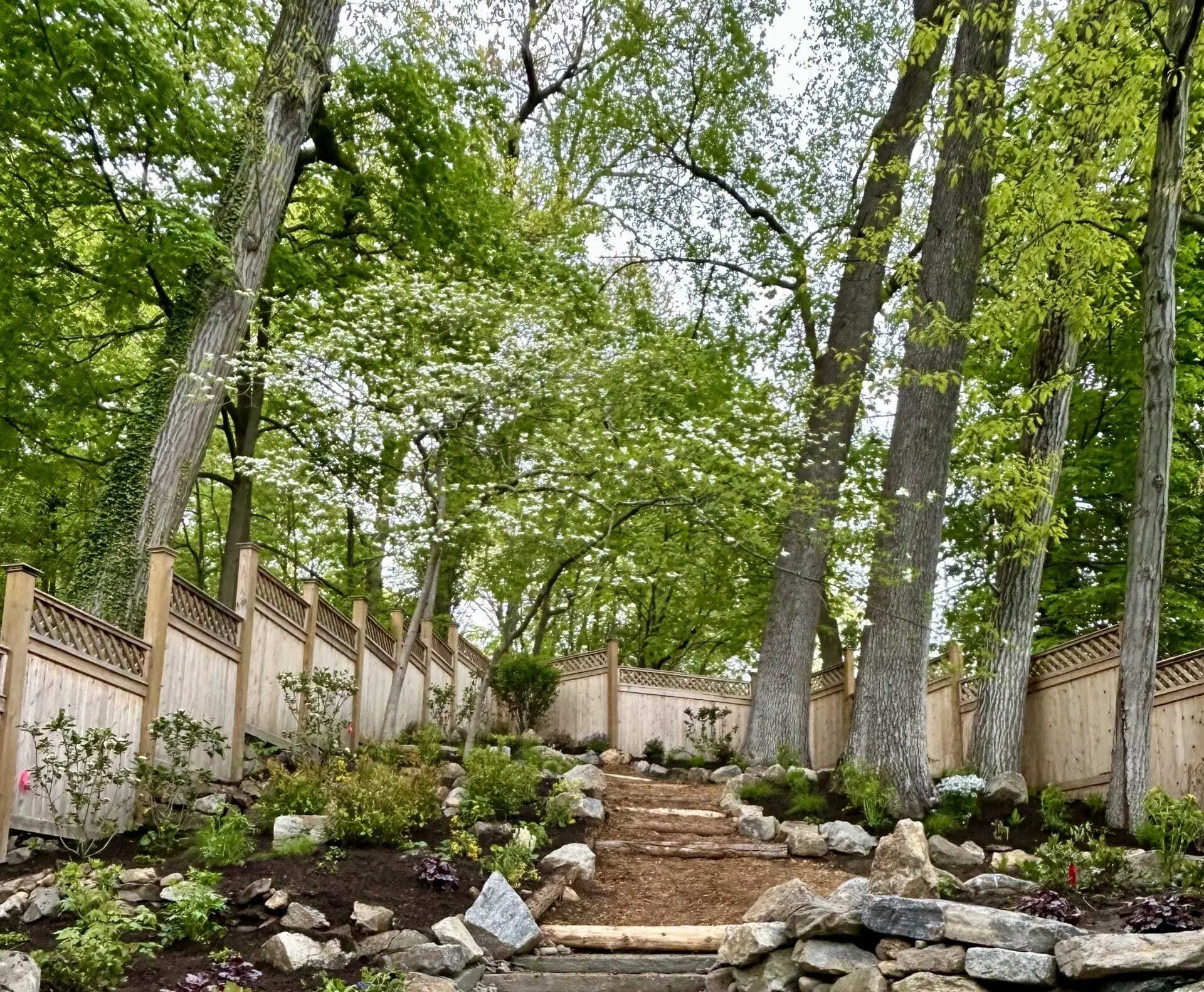
Flowering Dogwood Cornus florida
15-30’ high x 15-30’ wide
Part Shade; Average Water
Renowned for its large bracts with a petal-like appearance in spring, flowering dogwood trees are a long-time favorite in the landscape industry. Too often they are planted in full sun where they suffer; dappled shade is preferred as flowering dogwood is an understory tree. Brilliant red fall foliage. Susceptible to dogwood anthracnose.
Native Shrubs for Shade
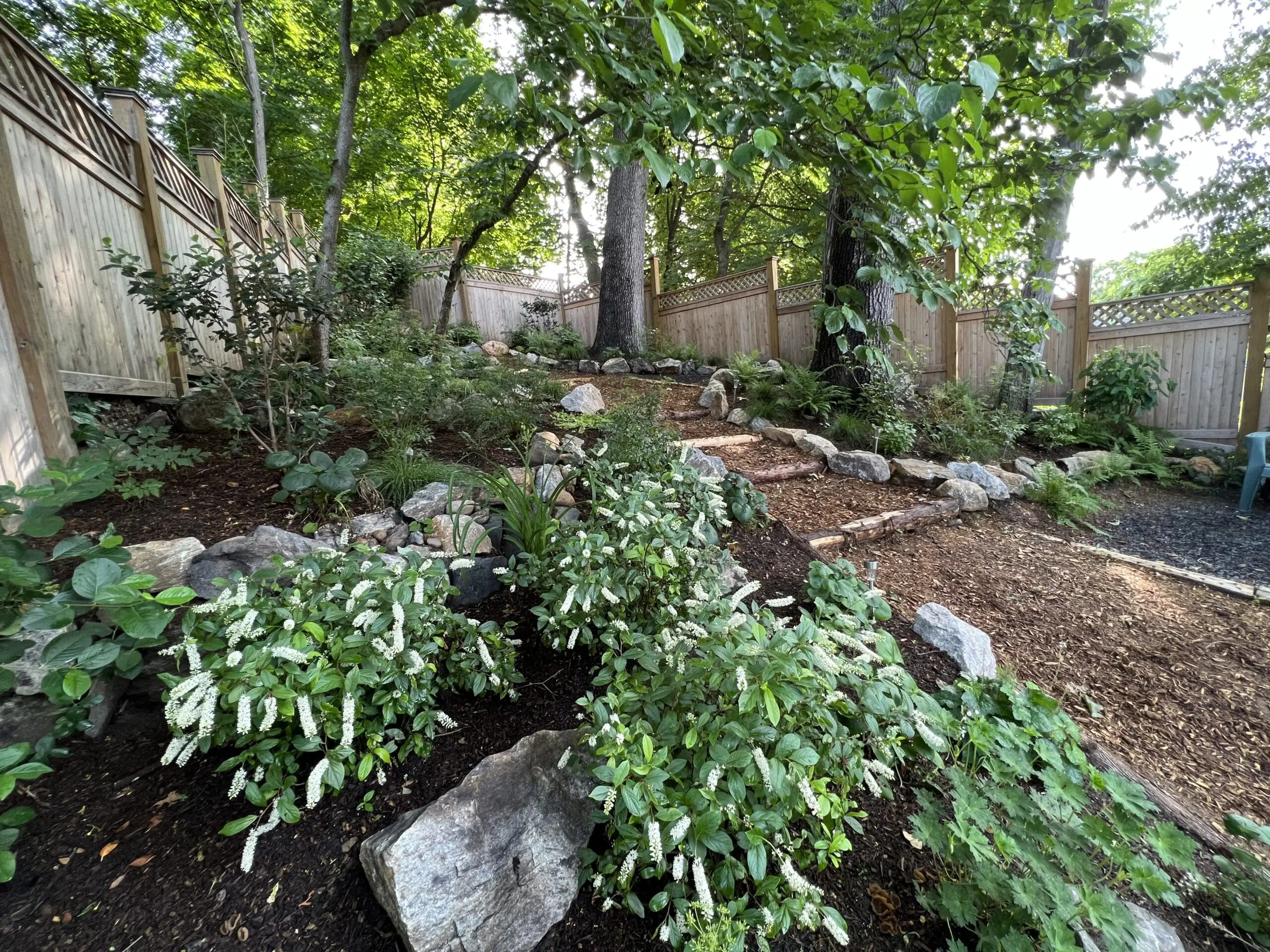
Sweetspire Itea virginica
3-5’ high and wide
Full Sun to Part Shade; Average to Wet Water
A charming Spring blooming native shrub with charismatic white bottlebrush blossoms. In fall, the foliage turns a beautiful golden-red. Itea tolerates average to wet soils, making it a great rain garden plant! Host plant for the American Holly Azure butterfly. Attracts native bees, lepidoptera, and birds.

Summersweet Clethra alnifolia
3-6’ high and wide; Average Water
A staple shrub in GJLD landscapes for its tolerance of many site conditions, abundance of ornamental qualities, and attractiveness to pollinators. Glossy dark green leaves and fragrant panicle flowers in summer make this shrub a standout. Plant it as a hedge, in your foundation, in your rain garden, or within your woodland understory. Clethra is incredibly versatile. Over eleven native lepidoptera species feed on Clethra as well as many native bees. There are many Clethra cultivars to suit size and color preferences; shown above is ‘Ruby Spice.’
Red & Black Chokeberry Aronia arbutifolia & Aronia melanocarpa
3-6’ high and wide
Full Sun to Part Shade; Average Water
Chokeberries offer spring blooms and persisting winter berries that provide critical late-season food for birds. The columnar shape and height of the straight species make them great for foundation plantings while dwarf cultivars make wonderful mass under plantings and borders. This is an ideal native rain garden shrub! Chokeberry attracts: Woodpeckers, Waxwings, Mockingbirds, Wood Warblers, Orioles, Crows, Jays, Sparrows, Vireos, and Thrushes.
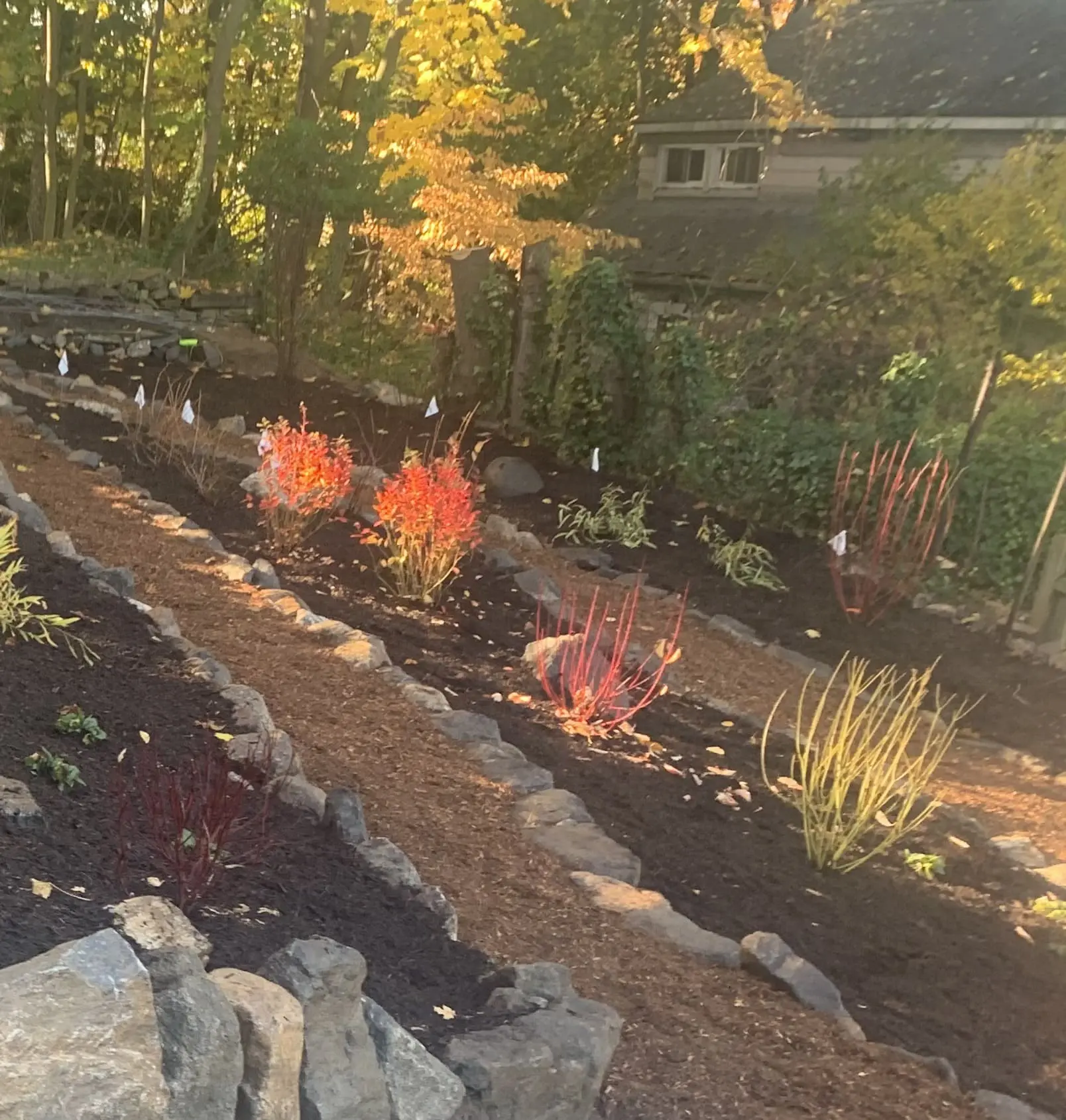
Red & Yellow Twig Dogwood Cornus sericea & Cornus sericea ‘Flavimarea’
6-9’ high and 7-10’ wide
Full Sun to Part Shade; Average Water
A favorite native shrub we use because of its immense habitat value and striking aesthetic in winter. White spring flowers in spring turn to blue drupes (fruit) in summer that attracts many birds including: American Goldfinch, Brown Thrasher, Eastern Bluebird, Gray Catbird, Norther Flicker, Northern Mockingbird and Purple Finch. Great for rain gardens and low points or wet spots in the landscape.
Drooping Laurel Leucothoe fontanesiana
2-6’ high and 4-8’ wide
Part Shade to Full Shade; Average Water
A great dwarf, blooming, evergreen native shrub for the shade garden! As a member of the Ericacea (blueberry) family, Dropping Laurel prefers acidic soil. Bell-shaped white flowers bloom in spring and attract native bees, butterflies and other beneficial insects. Great option for an evergreen groundcover as it spreads by suckering and can be severly pruned to manage the height.
Native Perennials for Shade
A few of our favorites, although we could dedicate an entire post to our native woodland perennials. Let us know if we should!
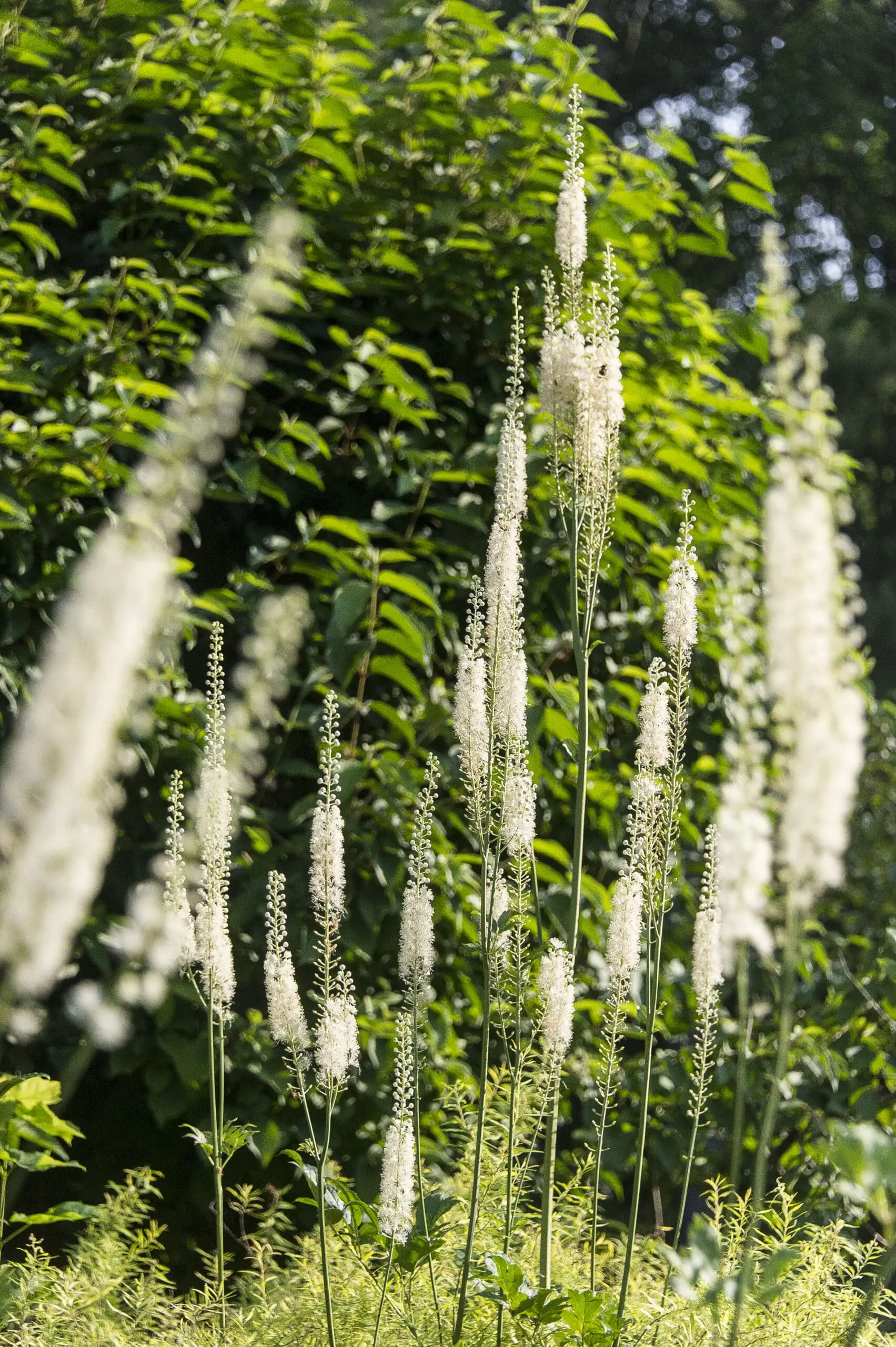
Black Cohosh Actea racemosa
4-7’ high and 2-4’ wide
Part Shade to Full Shade; Average Water
We love this perennial for its height / structure, charming flowers that attract pollinators, beautiful seedheads, and deer resistance! Prefers rich soil and 2-3 hours of morning sunlight, ideally. Host plant fro Spring Azure, and Holly Blue butterflies.
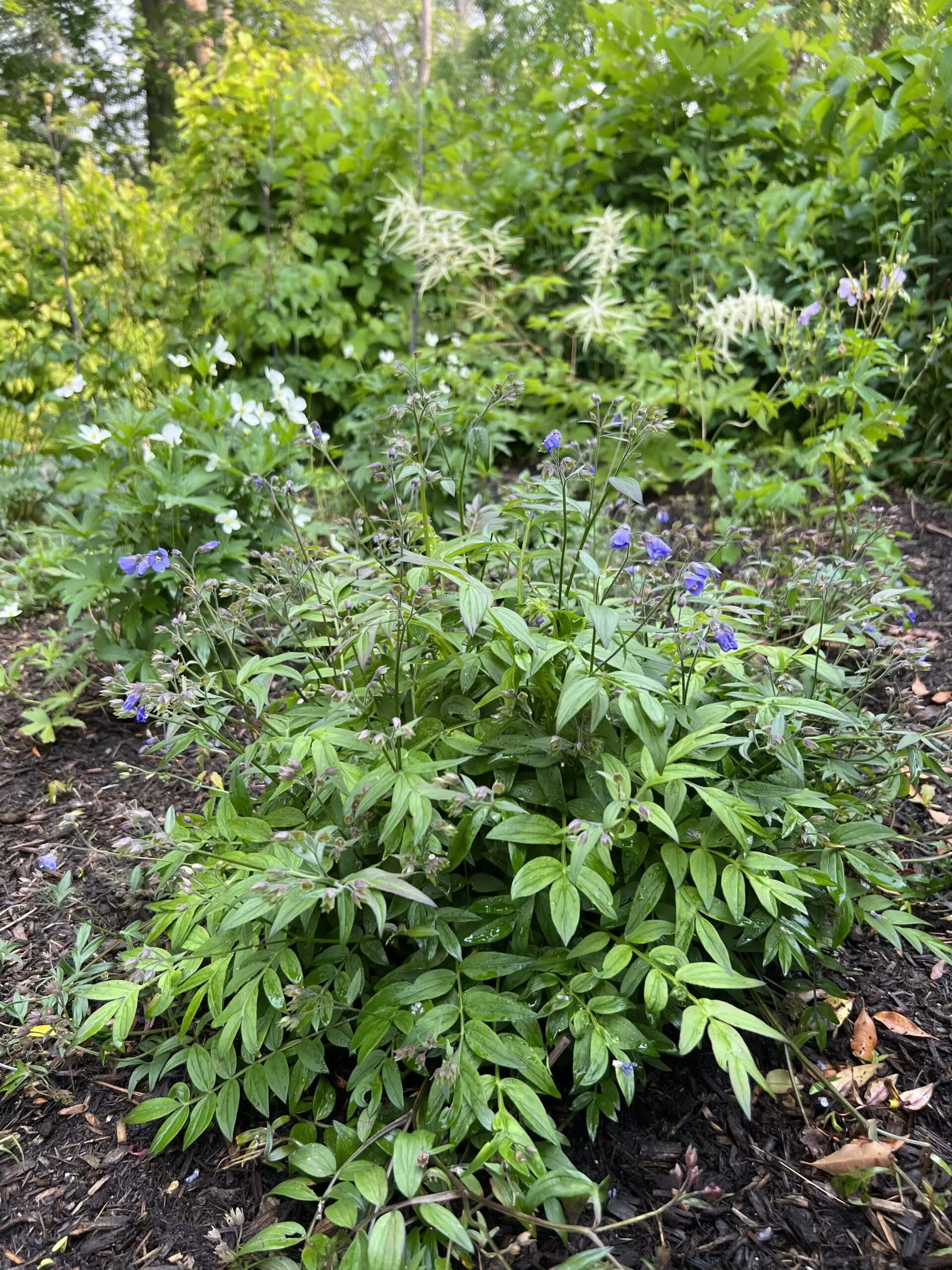
Jacob’s Ladder Polemonium reptans
1-3’ high and 1.5-3’ wide
Full Sun to Part Shade; Average Water
We love Jacob’s Ladder for its attractive fern-like foliage and profuse periwinkle blooms in spring. It spreads by rhizome making it a great ground cover or matrix plant option. Flowers attract native bees.
Pink Turtlehead Chelone lyonia
2-4’ high by 1.4 – 2.5’ wide
Full Sun to Part Shade; Average to Wet Water
This native perennial is perfect for wetland borders, banks and rain gardens. Hot pink tubular flowers bloom from August to September, leaves are dark green and shiny. Prefers rich, wet to moist soil and dappled shade. Attracts pollinators, native bees, and hummingbirds. Deer resistant!
White Wood Aster Eurybia divaricate
1.5-2.5’ high and wide
Part Shade to Full Shade; Dry to Average Water
White Wood Aster is a prolific late-season bloomer that attracts butterflies and other beneficial insects with its airy masses of white disc-and-ray flowers. One of the first to bloom in august, with bloom continuing through September.
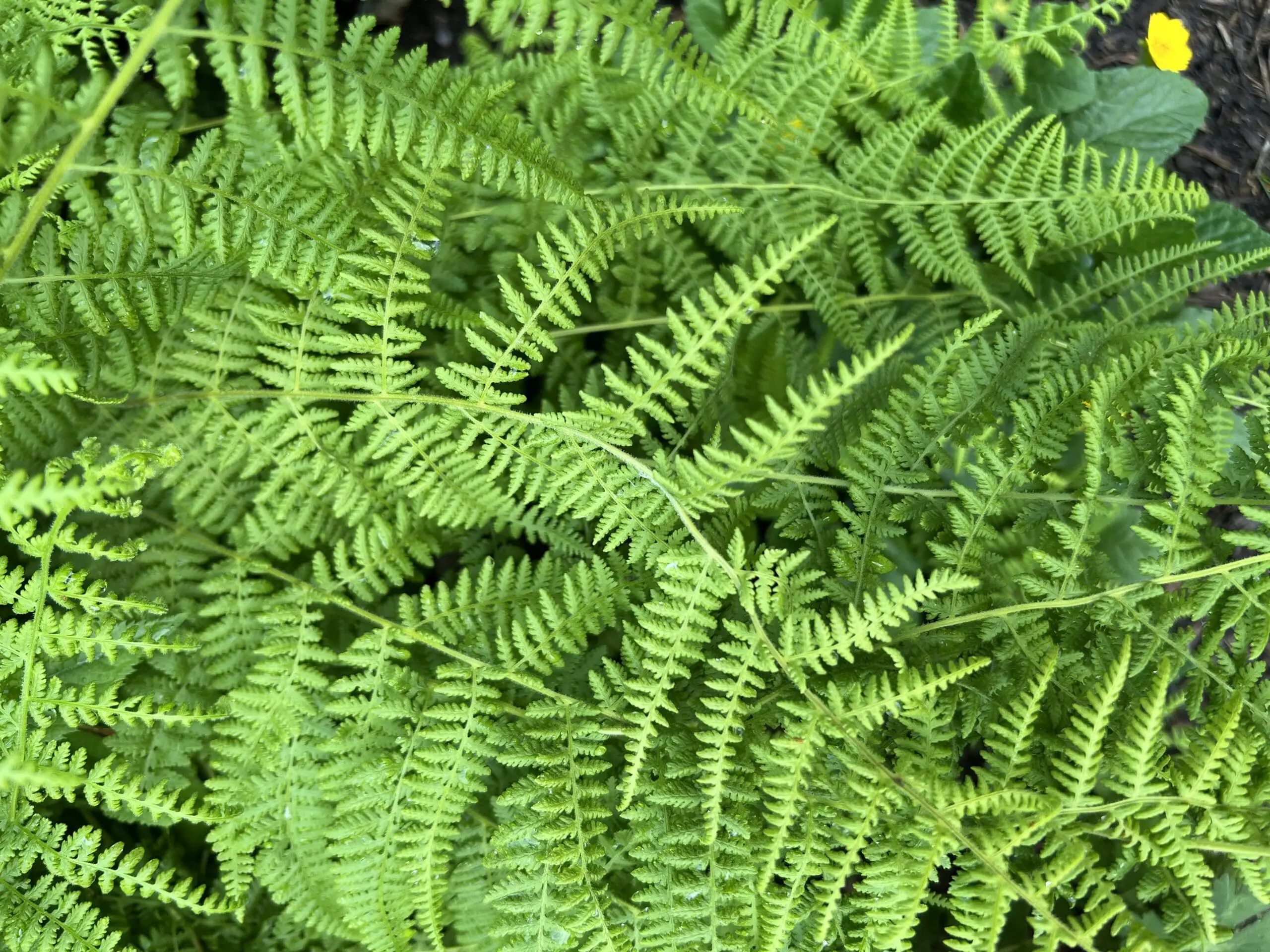
Ferns
Learn about our favorite native ferns on our previous blog.
Native Ground Cover for Shade
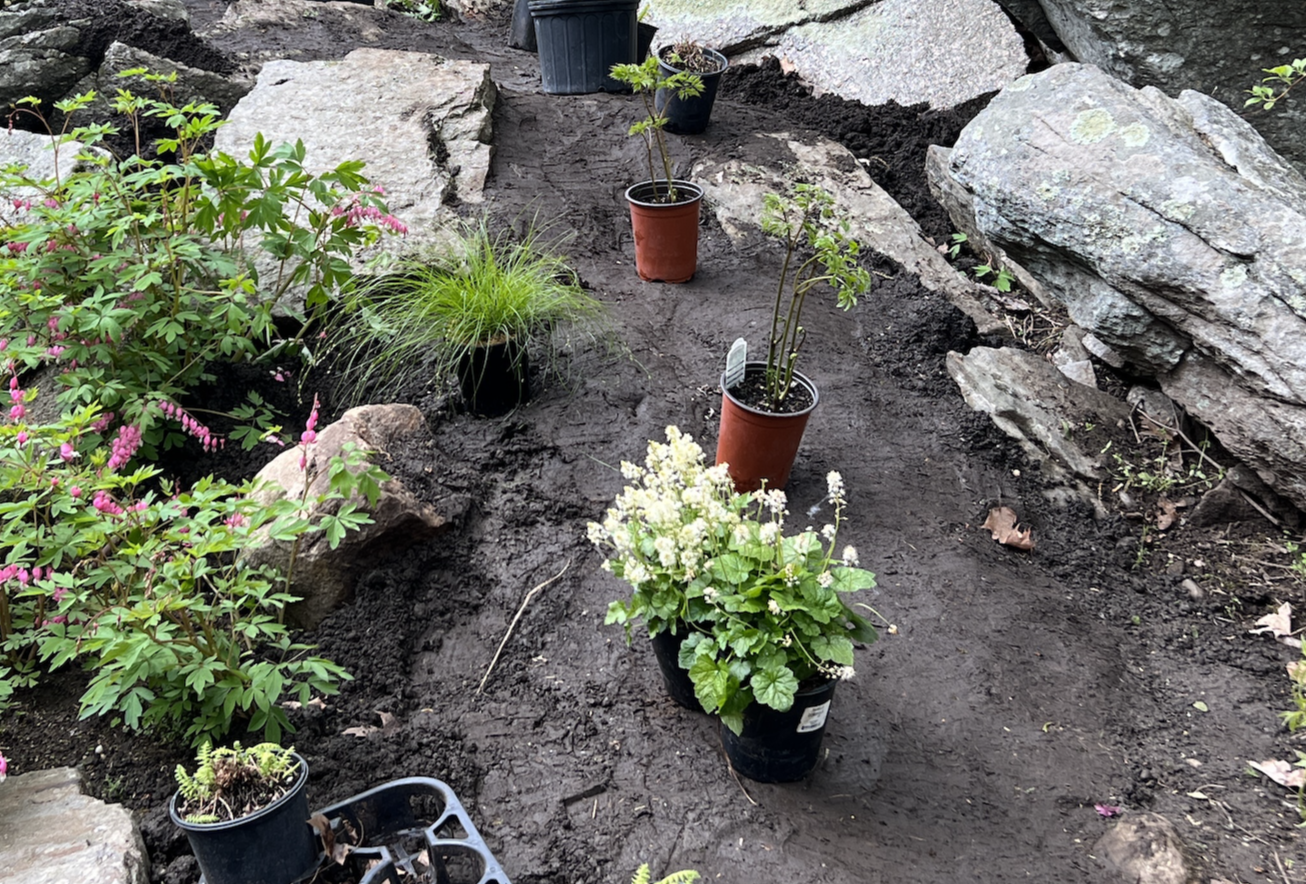
Foam Flower Tiarella cordifolia
.5-1’ high and wide
Part Shade to Full Shade; Average Water
A mounding form with tri-lobbed leaves and red veins make for an attractive groundcover, not to mention the “foamy” white flowers in early spring. Tiarella looks amazing en masse as a tree underplanting or along woodland paths. It is slow growing but spreads by rhizome meaning it will eventually fill gaps at the ground layer of your planting. Attracts native bees, song birds, and lepidoptera and is deer resistant.
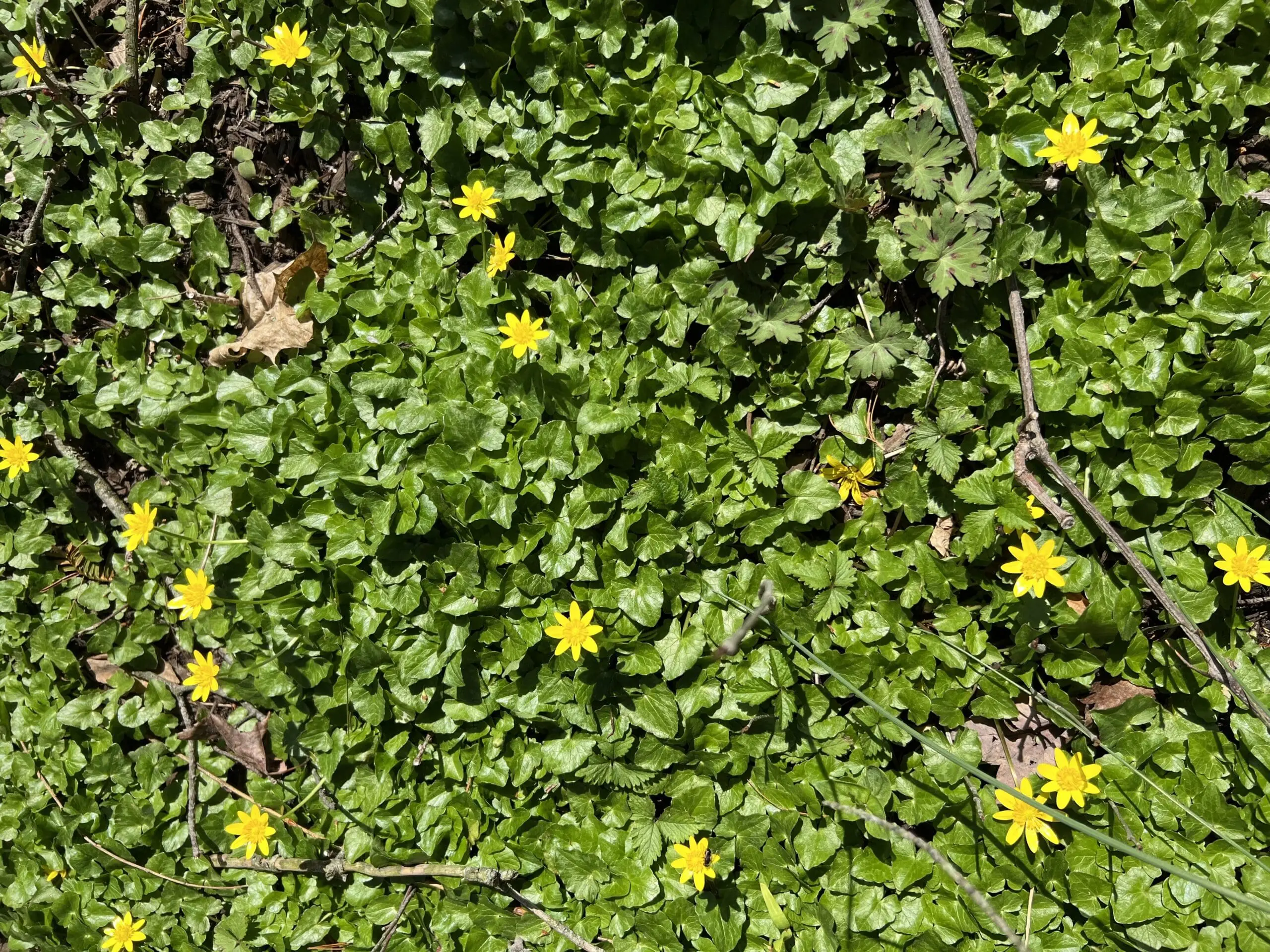
Green & Gold Chrysogonum virginianum
.5-1’ high and wide
Part Shade to Full Shade; Average to Wet Moisture
A repeat-blooming, native ground cover for shade?! Yes, its true. Green & Gold prefers rich, acidic, moist soil where it forms a rhizomatous mat of foliage (3-4” tall). Flower stems protrude above with aster/daisy-like golden blooms. Flowering is most prolific in spring but will continue through fall. Great ground cover for a rain garden!
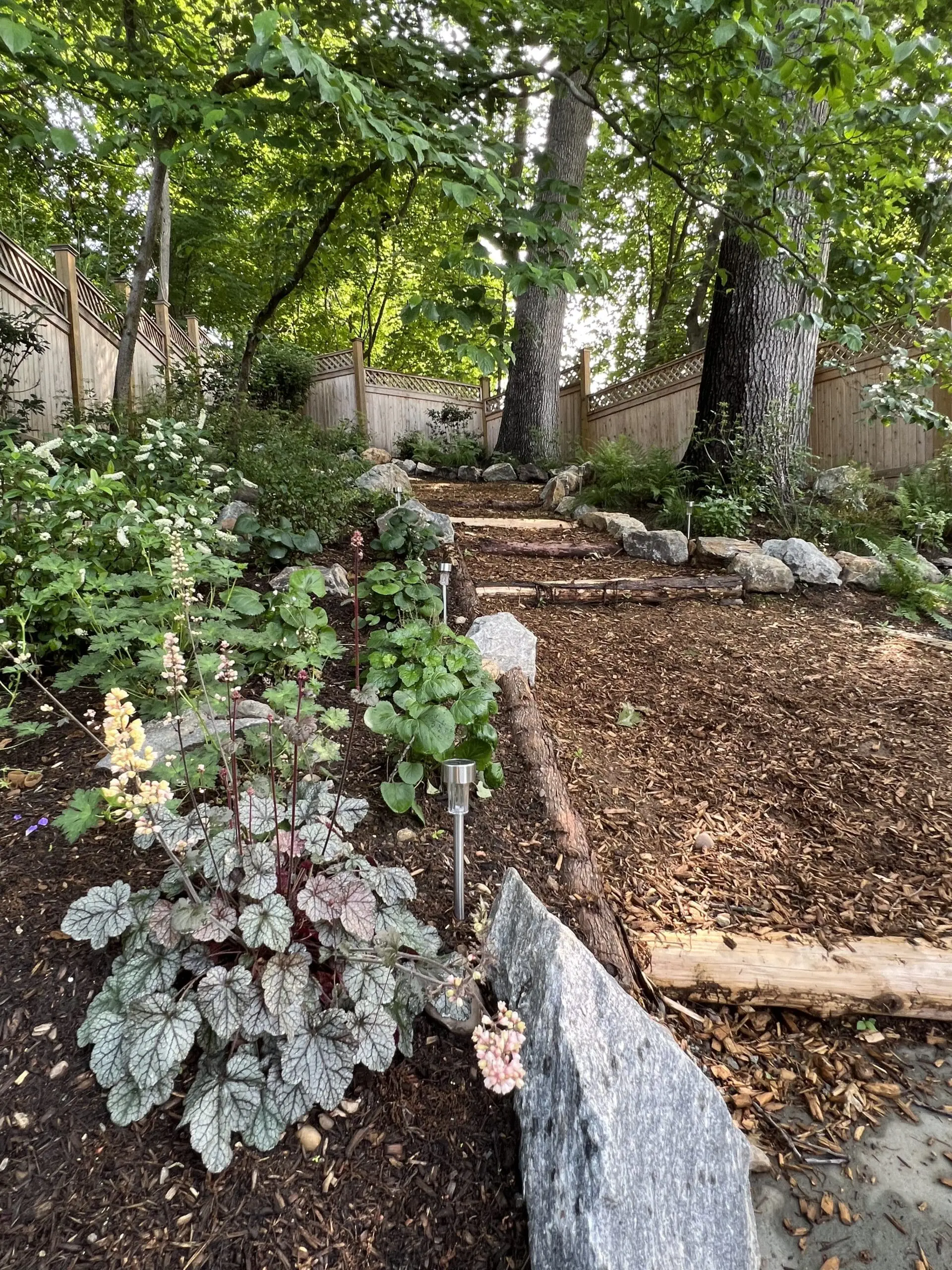
Coralbells Huechera spp
1-2’ high and wide
Part Shade to Full Shade; Average Water
Coralbells has a similar plant architecture to Foam Flower, making them great companion plants! Coralbells comes in a range of colors from chartreuse to burgundy, often with unique coloring in the leaf veins. Panicle flowers emerge above the rosette of foliage adding an ephemeral element to the garden. Most Coralbells flower in spring, but some, like cultivar ‘Autumn Bride’ flower from late summer to fall. This plant is deer resistant and can grow in inhospitable conditions, like under a black walnut tree. Attracts native bees including Halictid bees and has its own Heuchera specialist bee (Colletes aestivalis) and is a host plant for the Heinrich caterpillar. Some varieties have red flowers that may attract hummingbirds.
We hope you enjoyed this compilation of native plants for shady sites! Although it just scratches the surface of planting options, we hope it inspires you to plant more native and preserve your trees!
—
Green Jay Landscape Design
Where Design Meets Ecology
914-560-6570